WSP Inaugural Matariki Pit Firing
29 June 2025
As part of a Matariki mid-winter social event, our members and friends got together the evening of the 28th of June at Caroline Hamilton's property to share a hāngi and decorate pots for our inaugural Matariki pit firing on the 29th of June.
Given only one out of our group of 20 had pit-fired before (just once), we were extremely pleased with the results we achieved. Here is the process we followed and photos of some of the finished pots...

The pit was dug by Caroline Hamilton using a digger. It was approximately 3m long, by 1m wide, by 0.6m deep. It had two layers, but only the lower layer was used.
We think it could be shallower for the next firing, but the length was excellent, as it allowed all pots to be laid in a single layer.

Surfaces of pots were embellished the night before with various combustibles and colourants including:
Copper / cobalt oxides mixed with PVA glue
Copper wire
Cow dung
Banana peels
Seaweed
Seashells
Palm fibre
Dried fruits
Steel wool
Tin foil
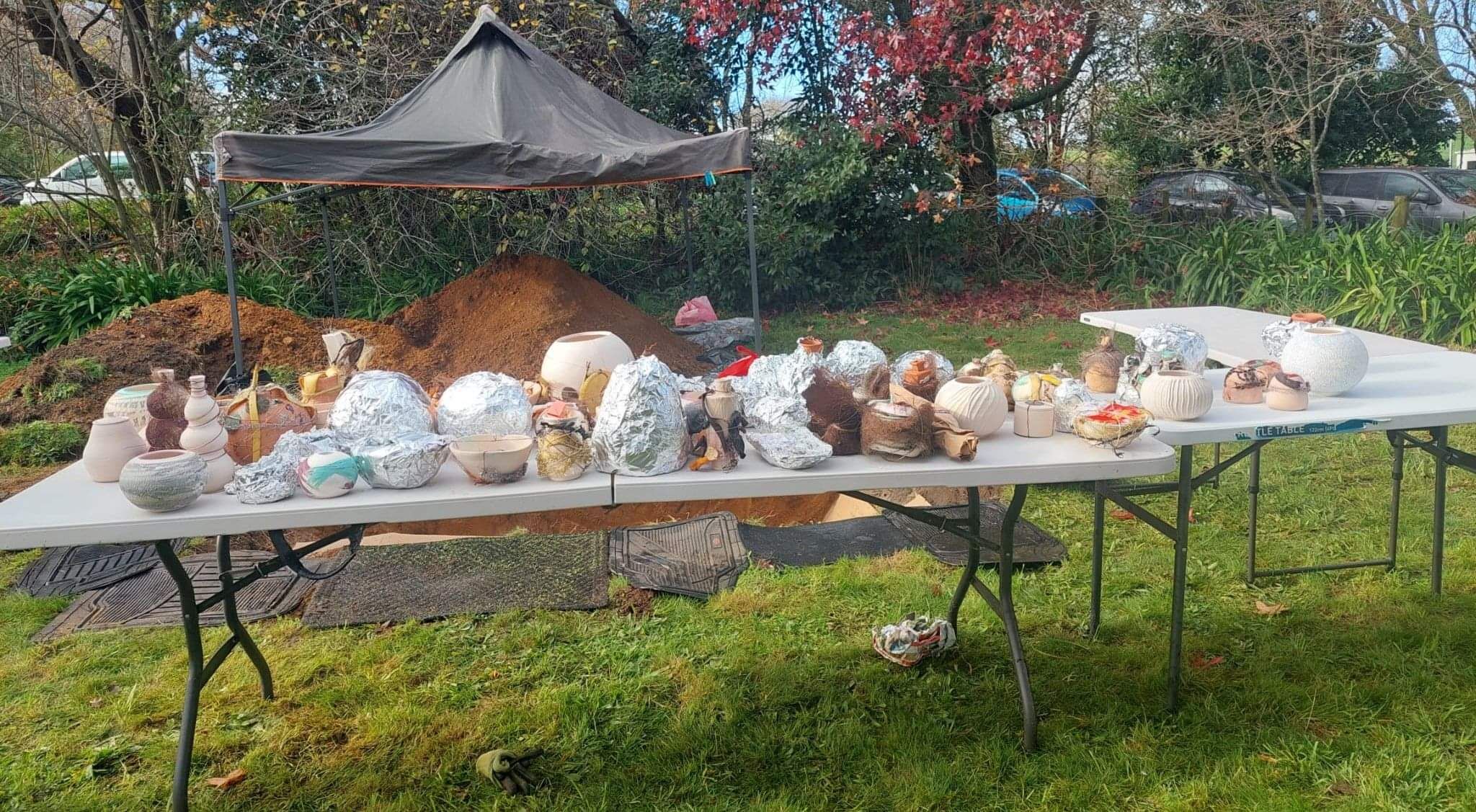

The pit was lined with cardboard sheets, then a layer of sawdust was added, roughly 5-10cm deep.
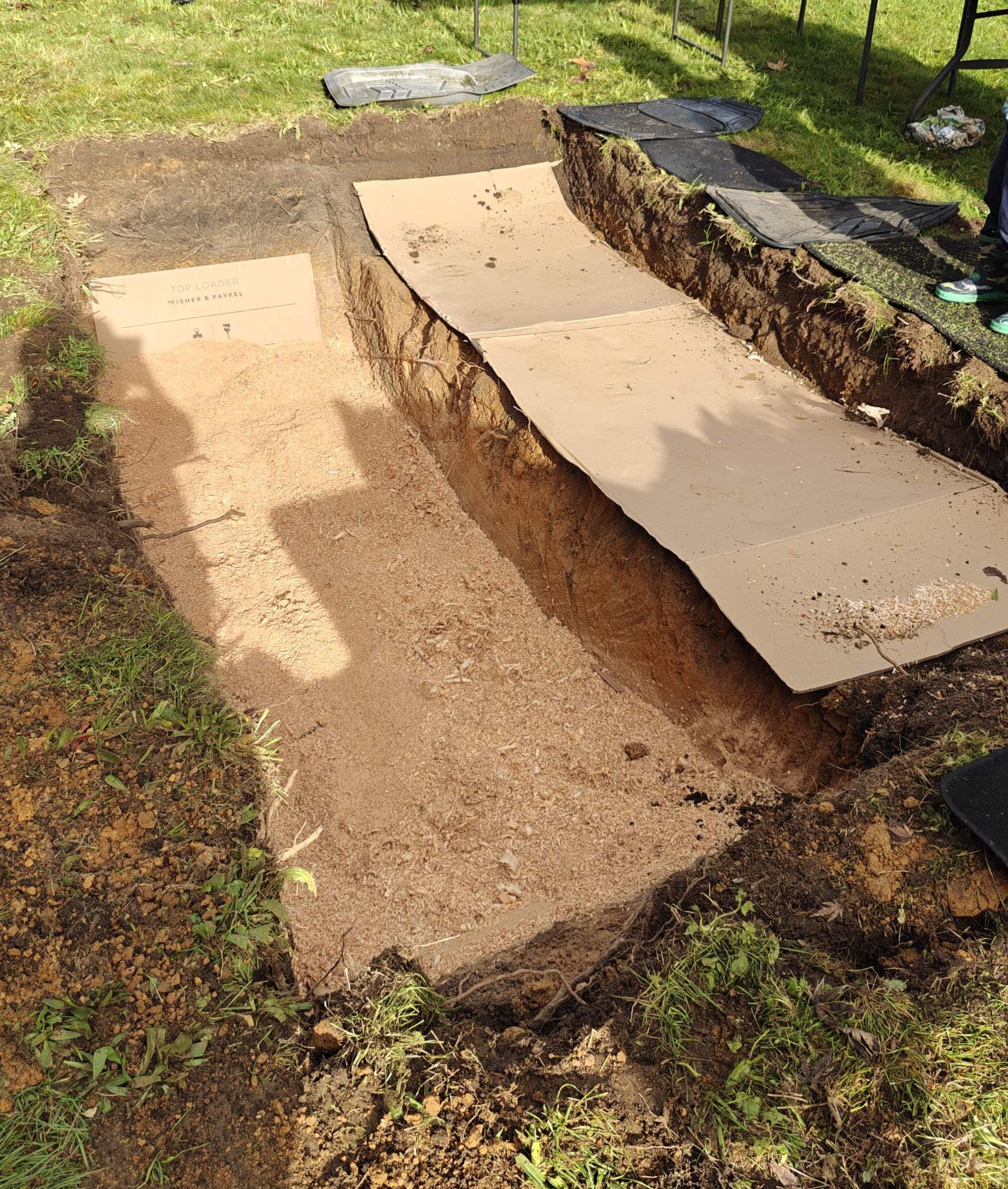

Pots were stacked on top of the sawdust, some were partially submerged into the sawdust and at various angles.
The parts that were submerged went predominantly black from the smoke. They were laid close together, but with some big bits of wood in between to hold the weight of the wood that would be stacked on top.
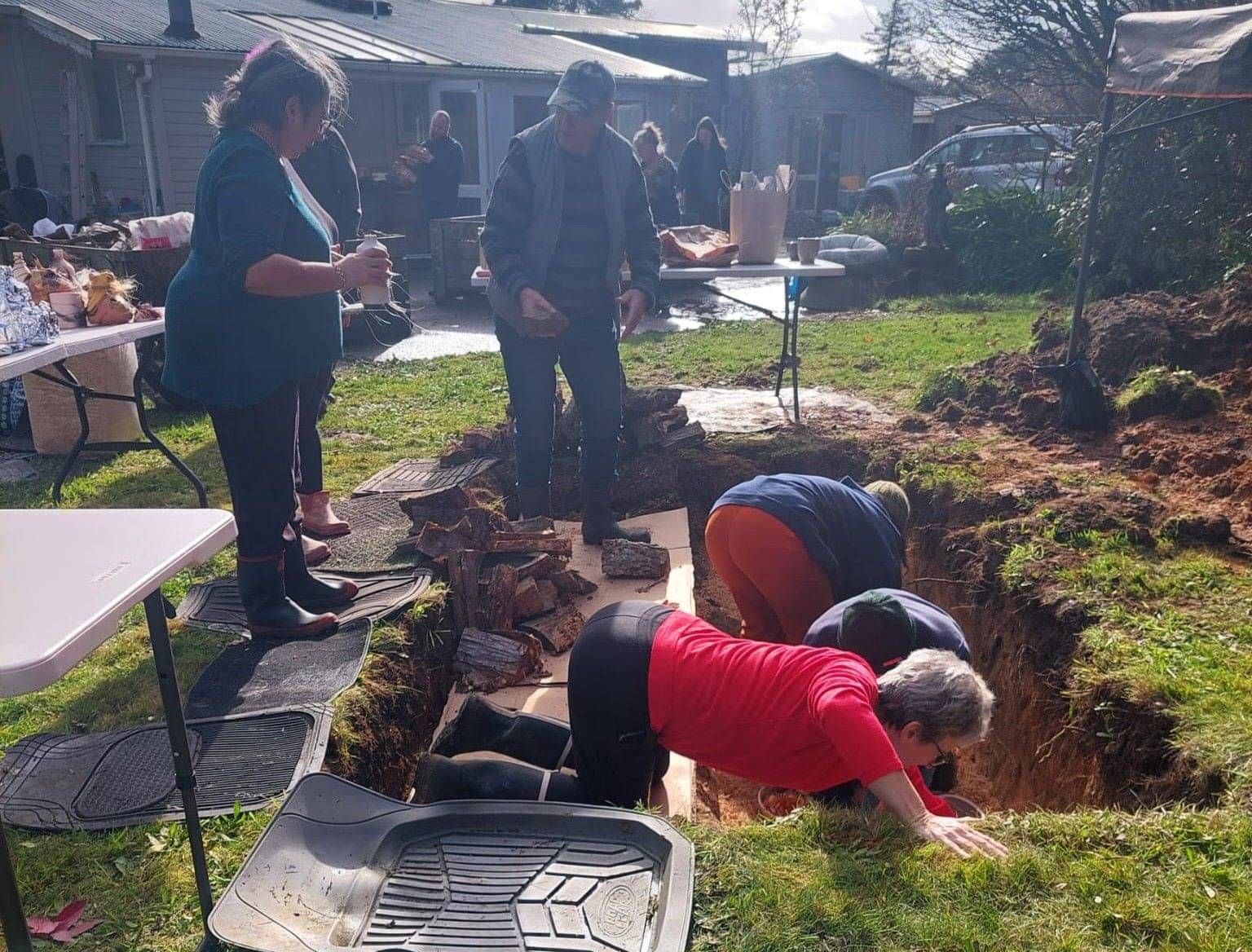
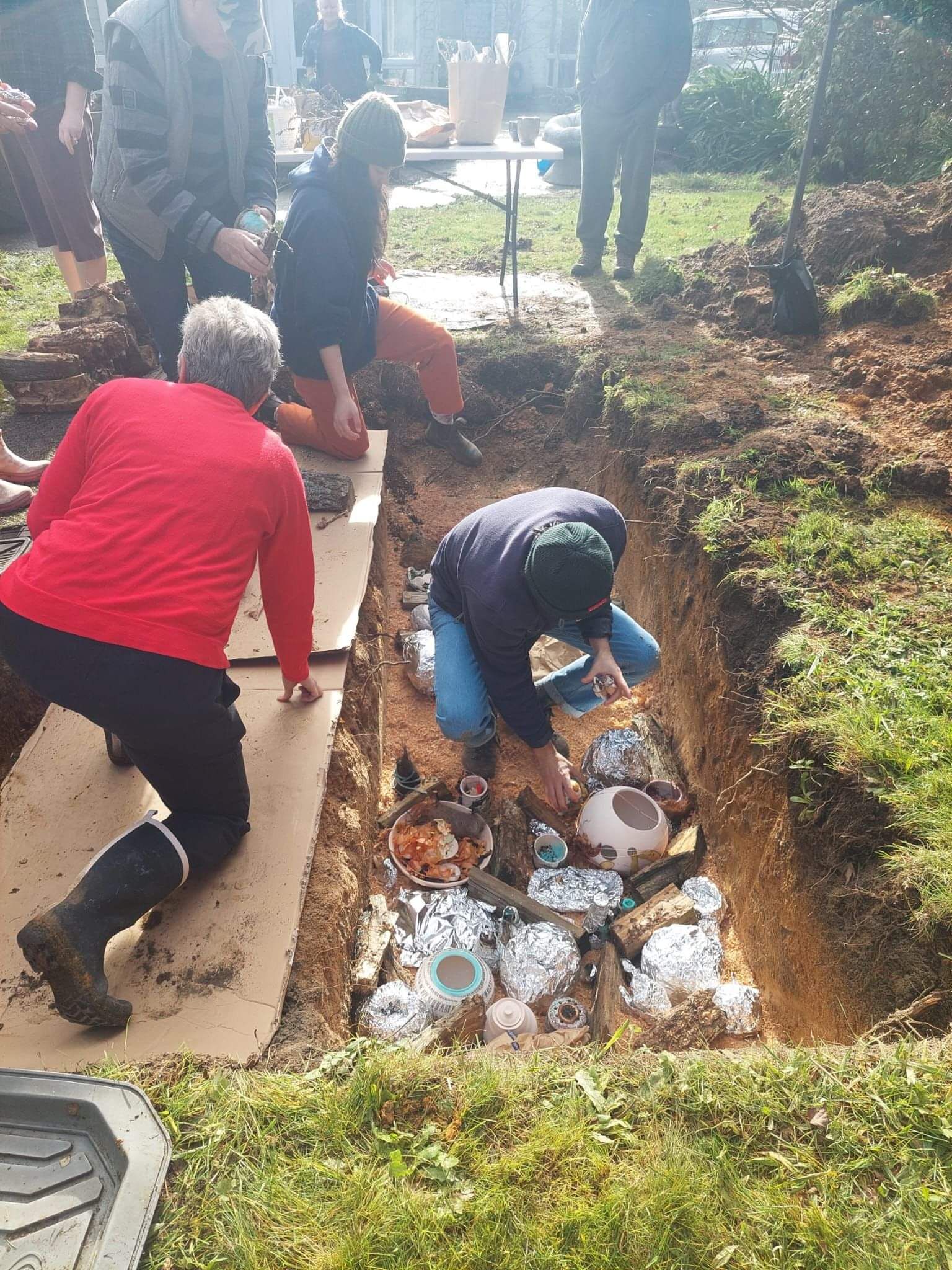
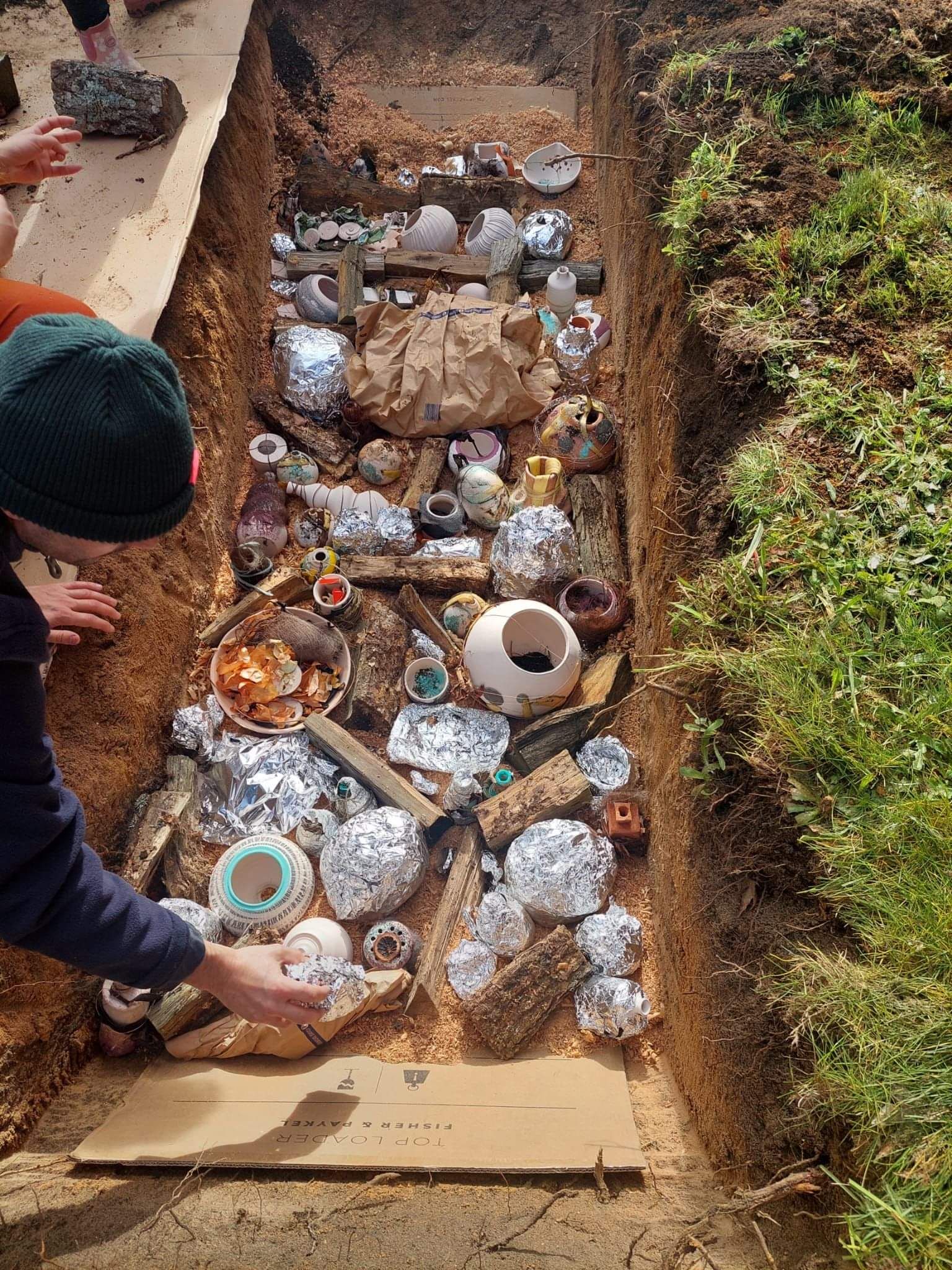
A generous layer of Magic Dust was sprinkled over the top of the pots
Magic Dust is made up of 2 parts salt, 1 part copper carbonate. We made 3kg of the mix and sprinkled approx. 1.5-2kg onto the pots.
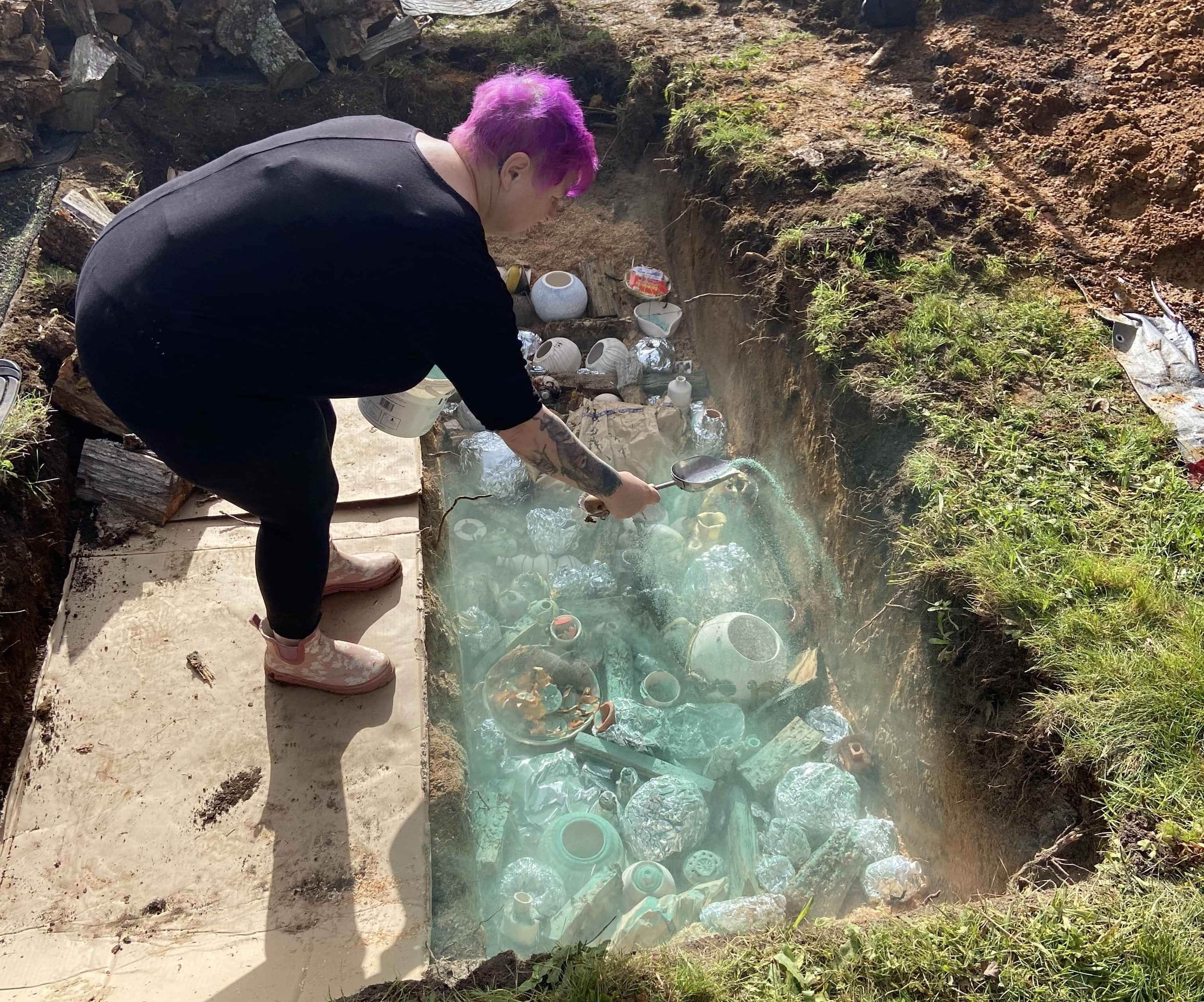
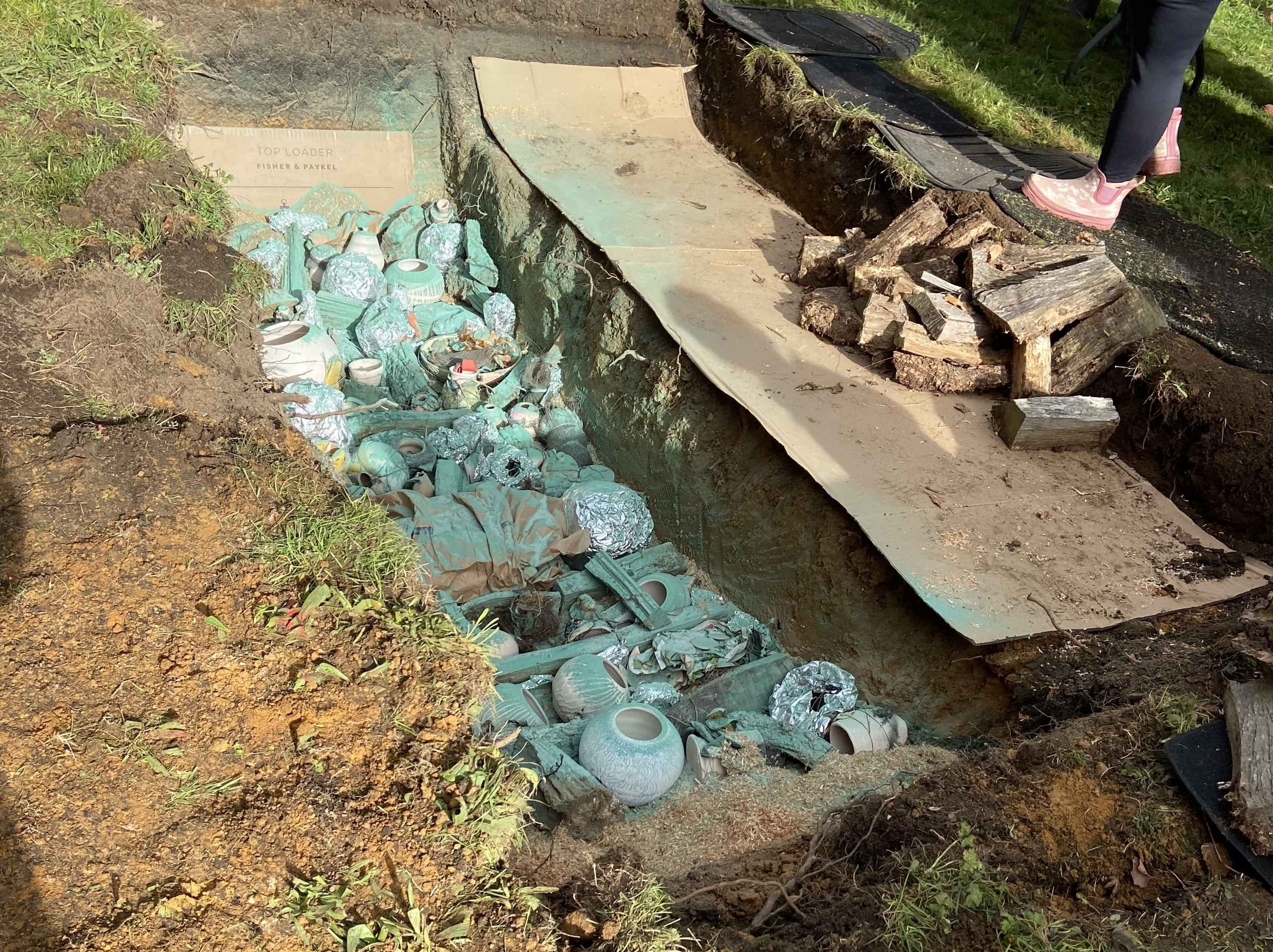
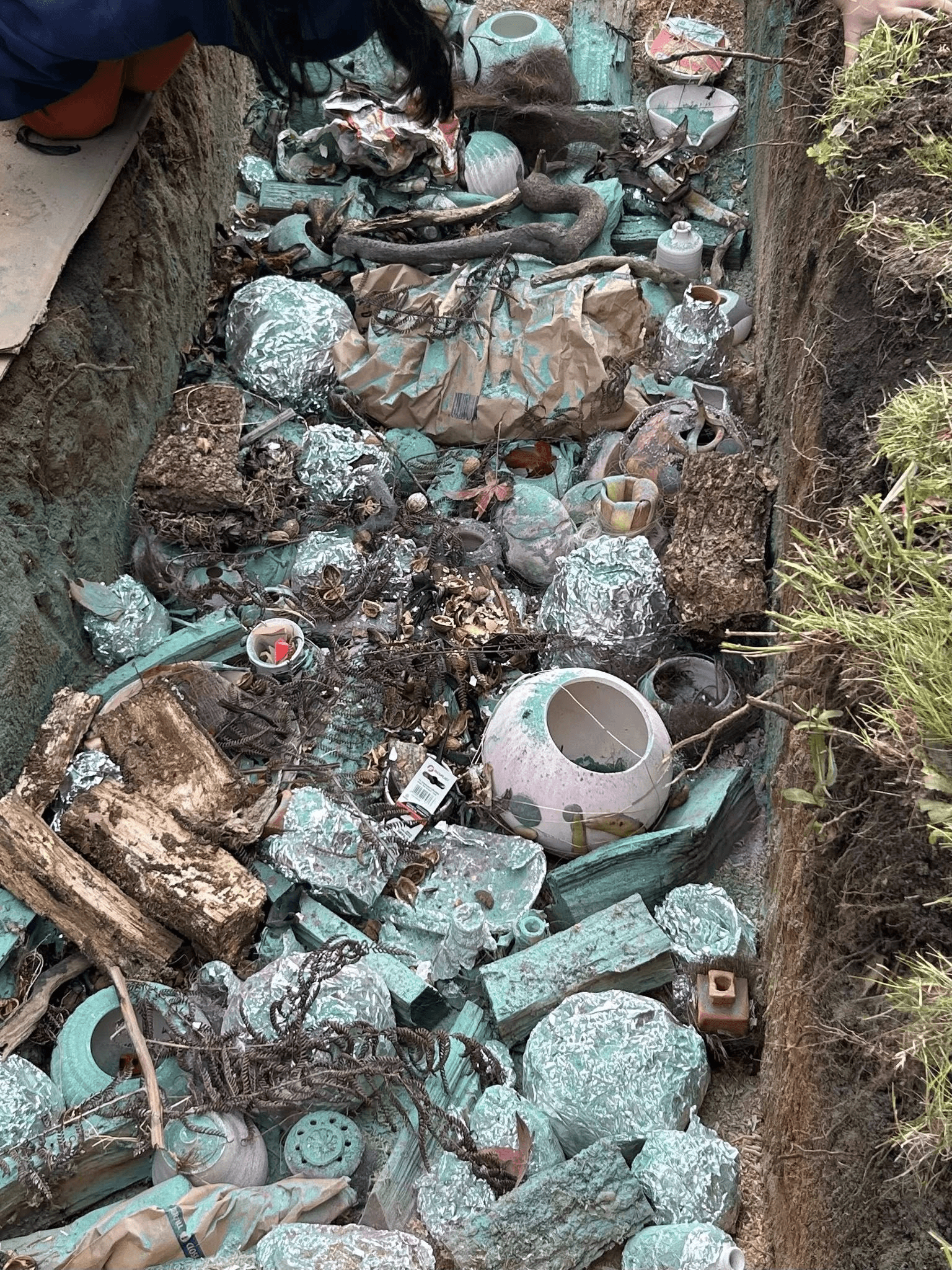
Next we put another layer of cardboard over the pots and then stacked 2-3 layers of firewood on top.
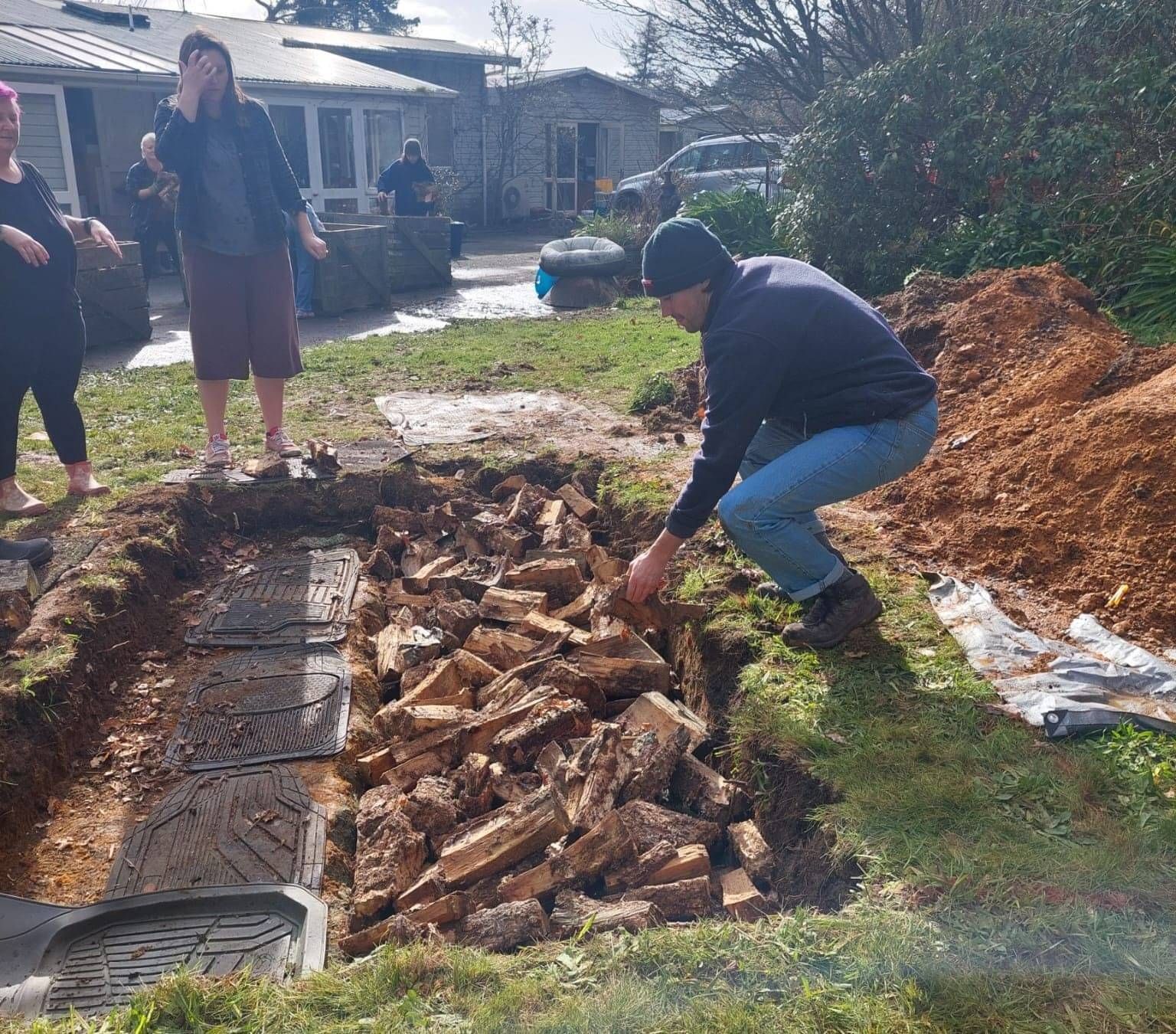
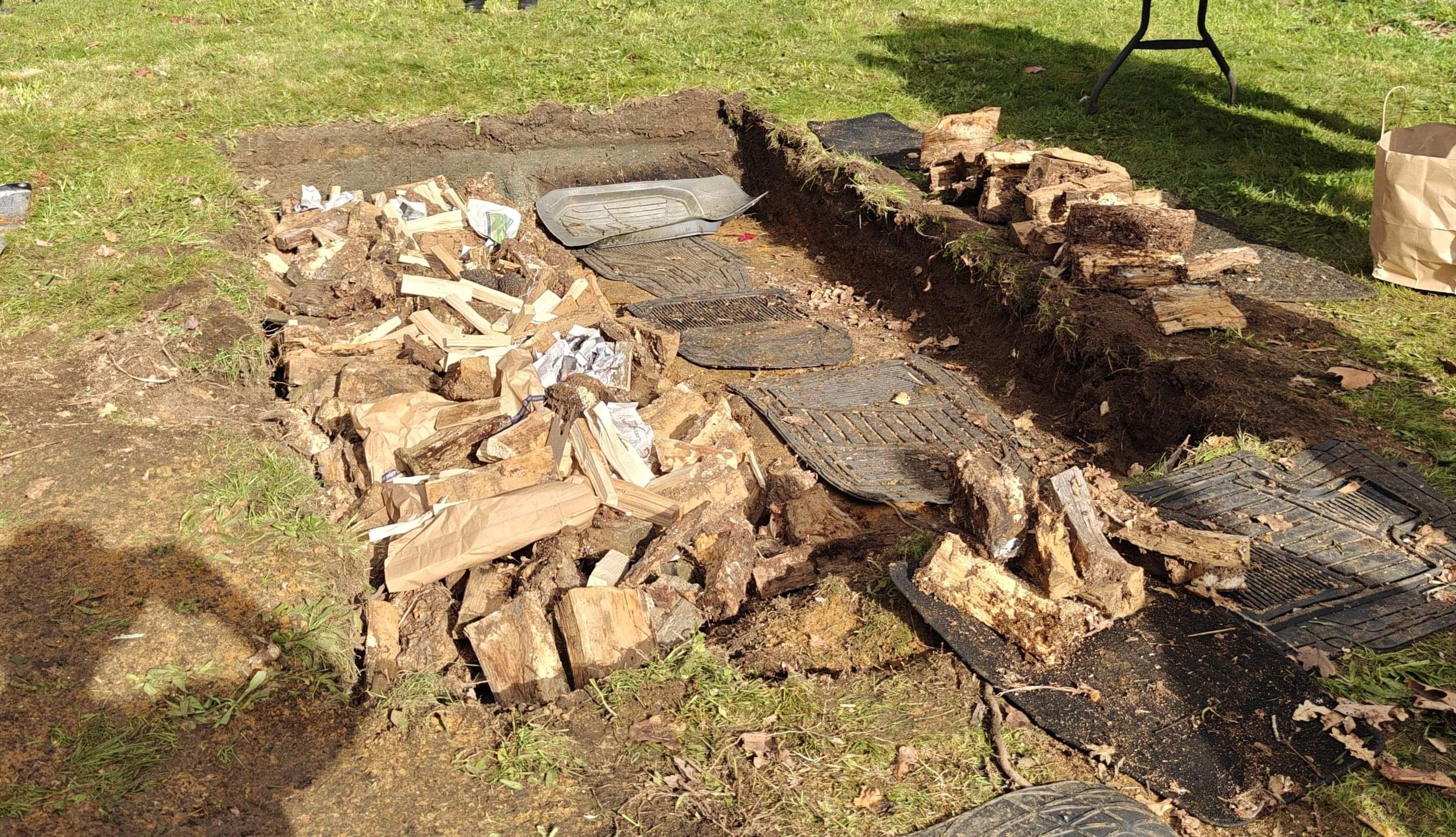
Caroline Hamilton lit the fire!
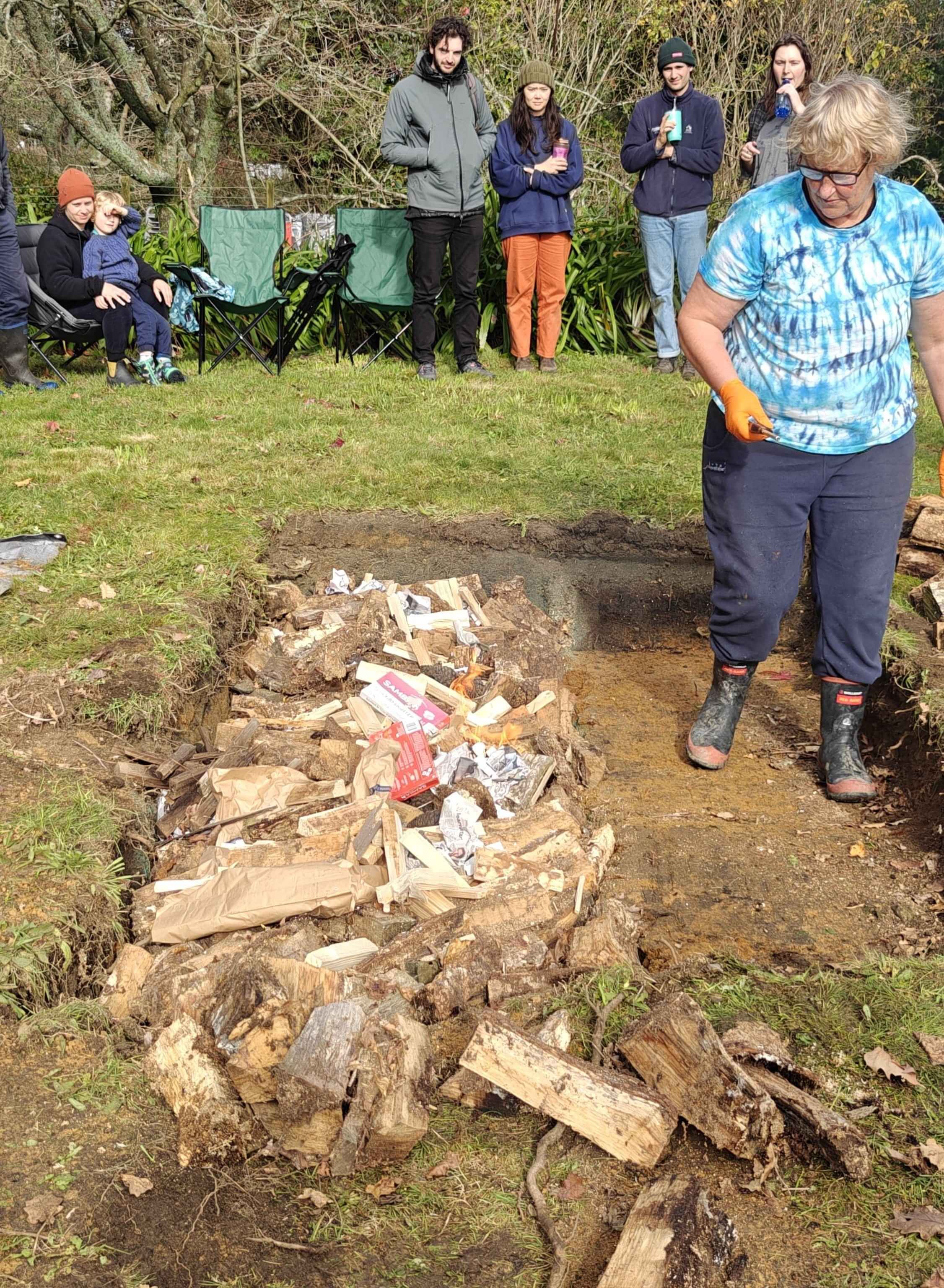
Once the wood burnt down and had white edges on the charcoal, we added another layer of wood.
We repeated this two more times. We're not sure if we needed to do this as many times, but we did get good results.
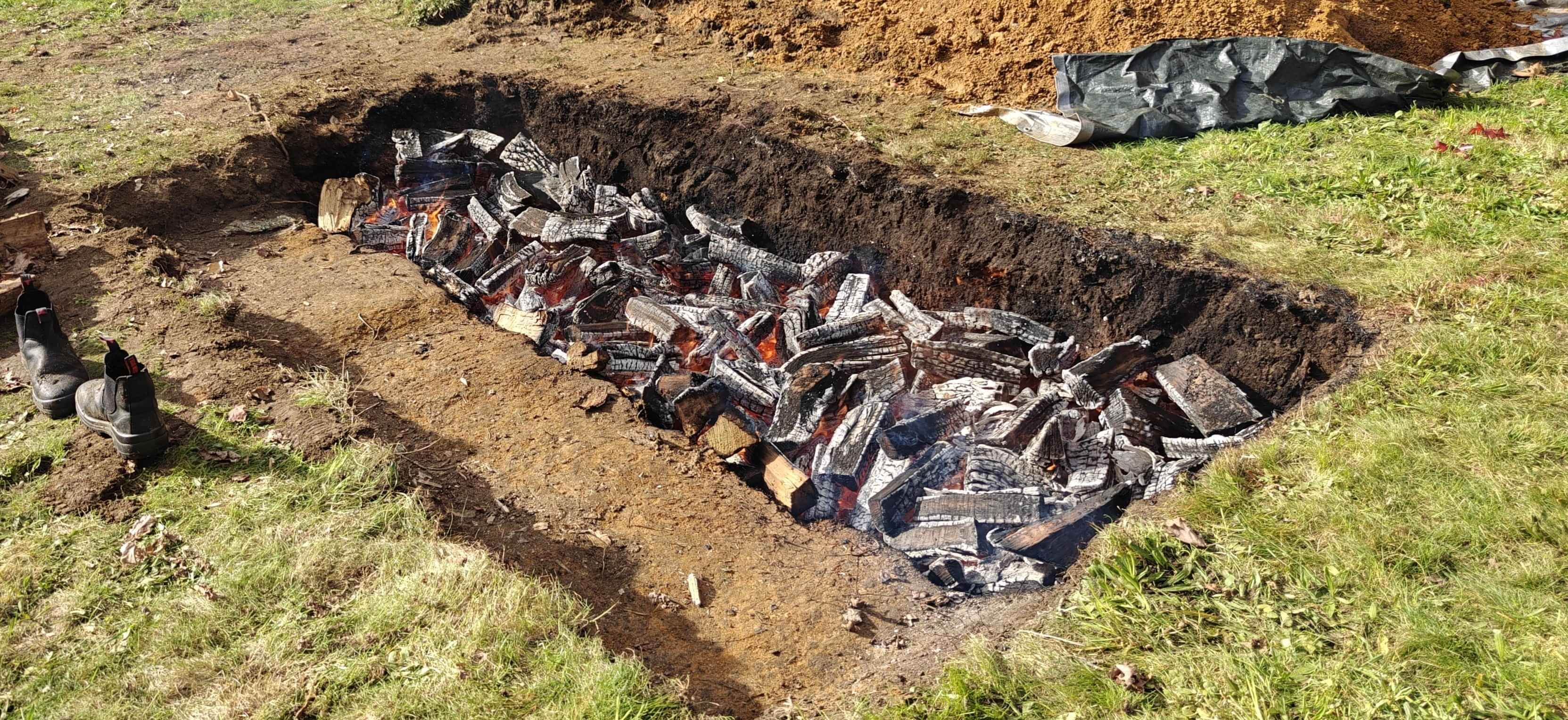
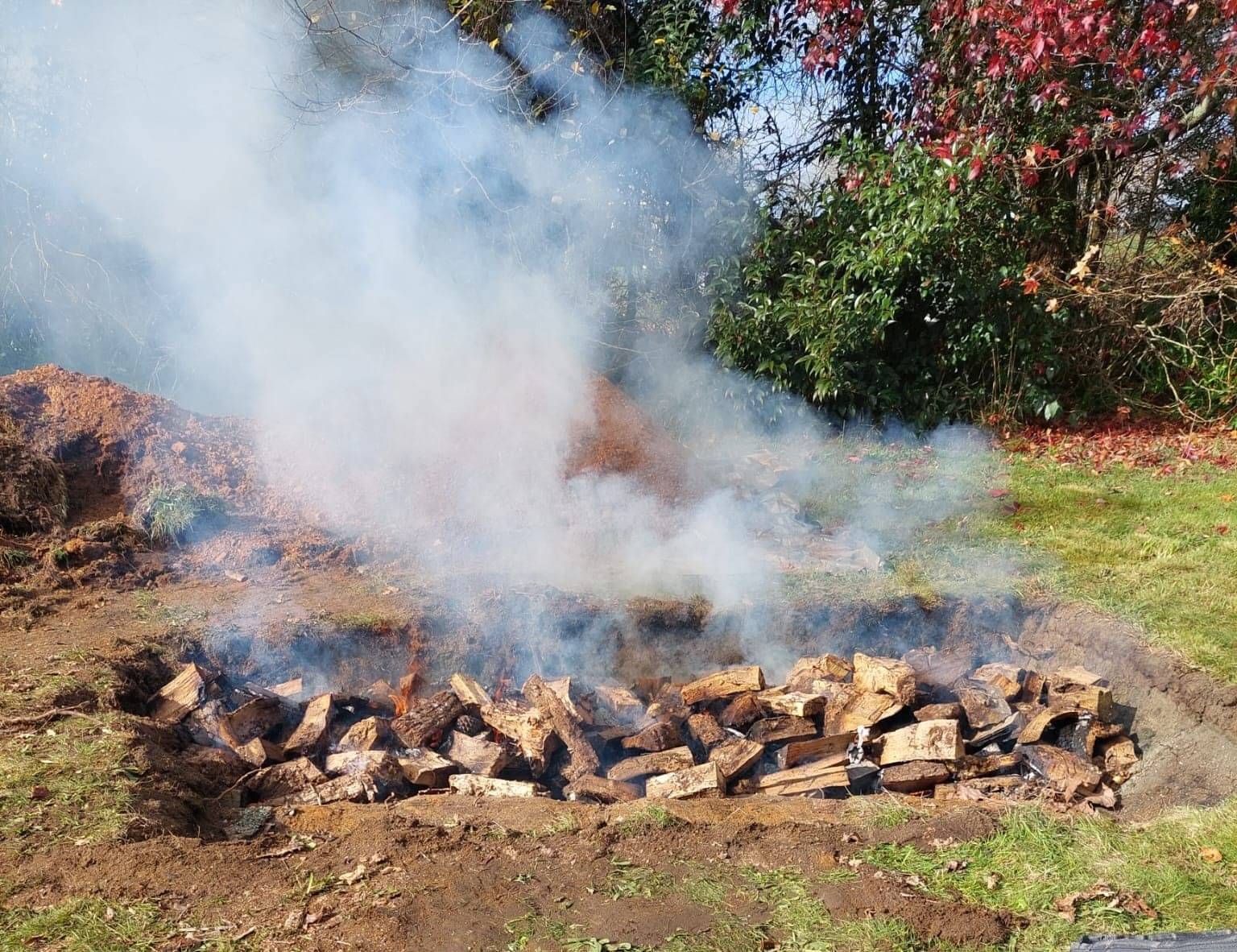
Once the last layer of wood was burnt down, we covered the pit with sheets of metal and left it to cool.
We planned to open the pit in two weeks time, but as the weather was forecast to be wet, we opened it on the Tuesday evening after firing. Most of the pots were cool by that stage, although there were a couple of hot spots. Gloves recommended!
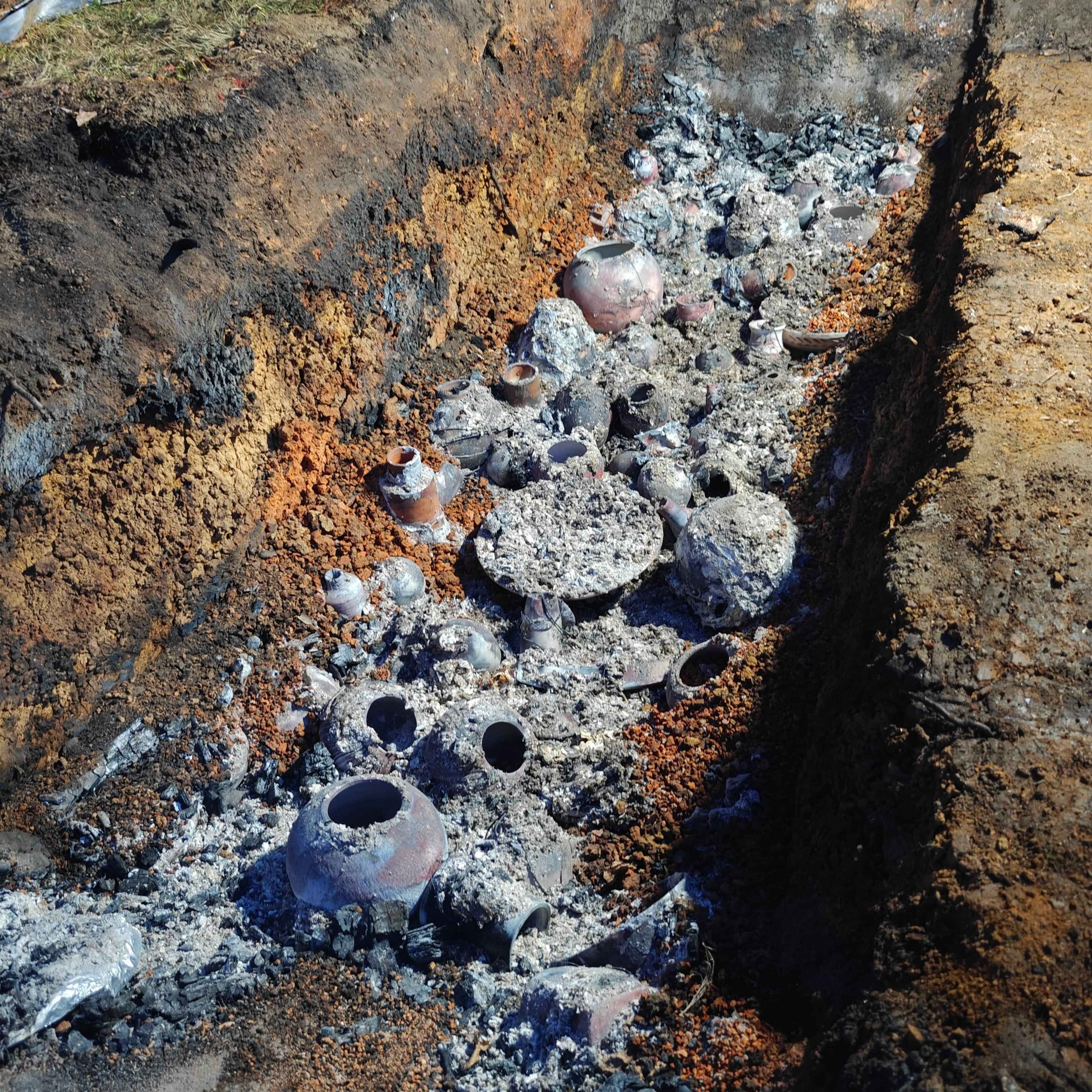
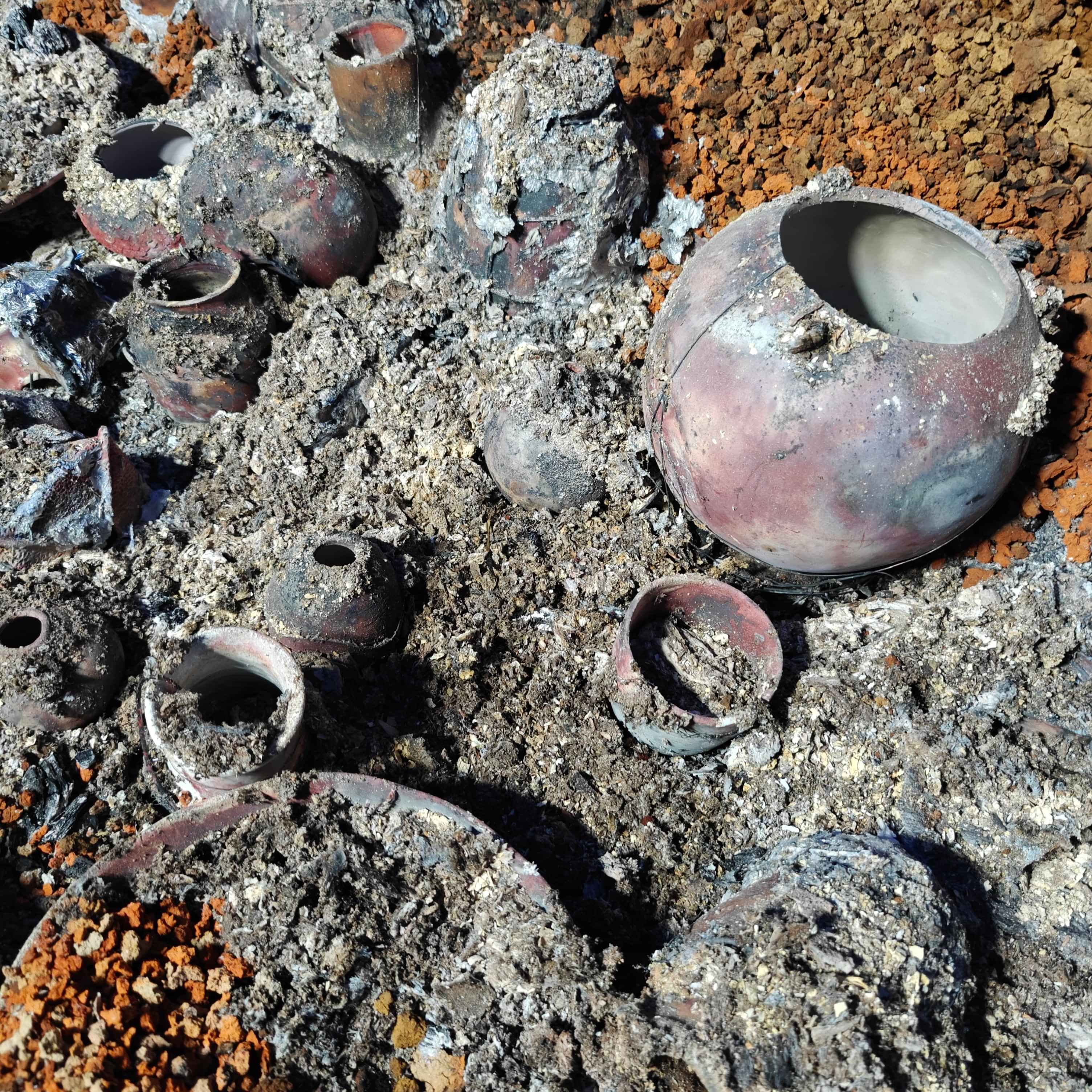
The pots were all loaded onto tables for an initial clean-up, removing soil, tinfoil, burnt combustibles and tin foil etc.
Much ooohing and aaaahing took place :)
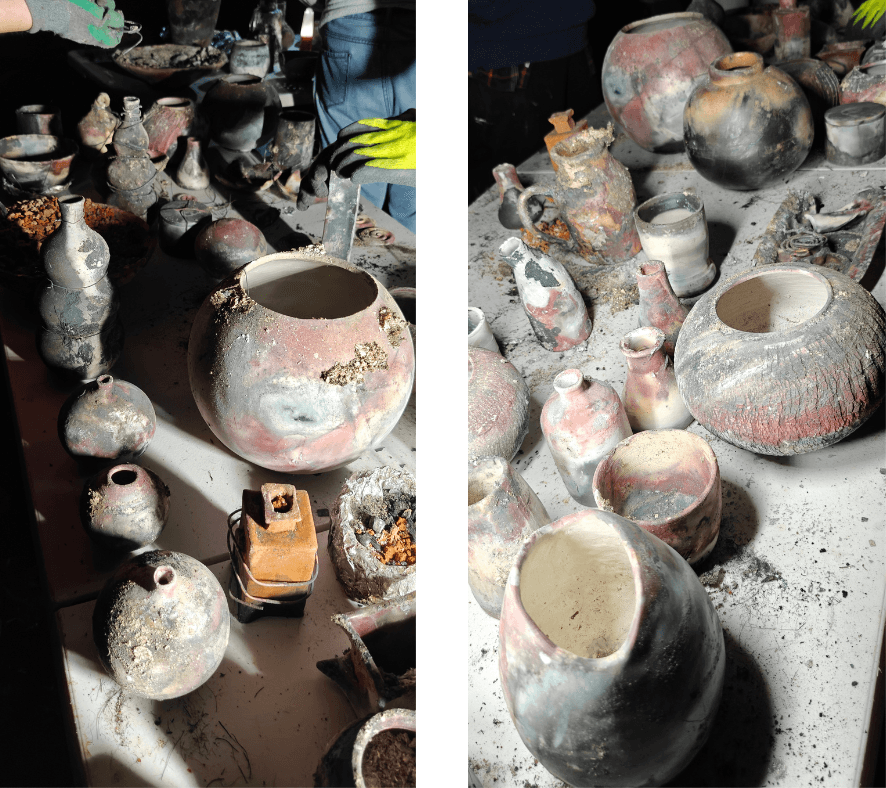
Here are some of the finished pots from the firing.
We were super pleased with the fantastic colouring and interesting marks that were achieved!











